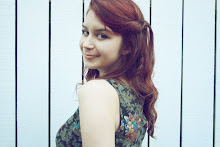FINAL BIBLIOGRAPHY
Books:
Ateneum Art Museum., 2008. Ateneum Guide. London: Atenum Art Museum Publications.
This book was not the most significant- though useful in that it gave me the chance to browse through many Finnish artists who worked with the theme of the Kalevala; Once I visited the gallery itself, and bought the book 'Kalevala in Images', this source became relatively unimportant.
Finnish National Gallery., 2009. The Kalevala in Images. Helsinki: Valtion Taidemuseo.
This book was very significant- It included all the significant artists who had studied the Kalevala, and highlighted the importance of the text in Finnish history. It was increadibly inspirational to see how much had already been accomplished (,in Finnish history,) by artists communicating stories or characters in the Kalevala. One interesting idea that this source communicated to me was the idea that specific characters were the focus of artists during different political periods. Whether this is intentional by the group of artists studying the text, or a result of the political situation cannot be traced. From reading this text it also became apparent that the artists, and all cultural figures in Finland, were in a sort of collaborative atmostphere. It is impossible to read about Finlands greatest painter, without reading about finlands greatest writers or musician, as their careers were all tied together with the same concept. Communicating a 'righter' lifestyle in a way became the goal of artists studying the Kalevala, all of who, through letters to each other, claimed that the Kalevala contained all cultural graces that society was begginning to loose. A rather grand statement, but one echoed by nearly all significant cultural figures from Finland (, mostly at the time of 1900-50).
In all, this source, after the Kalevala was most inspiring.
Kouvolan Taidemuseo., 2007. Satuja ja Myyttejä; kertomuksien kultakausi. Helsinki: Otava.
A book looking at diffent ways artists in Finland have dealt with communicating stories and myths.
Museum of Arts and Design., 2009. Slash: Paper Under Knife. New York: Five Continents Editions.
As stated in my PP, and Evaluative statement, paper art as a whole has been an inspiration in this project.
Rauhala, O., 2003. Luonnon aika. Keuruu: Otavan Kirjapainio Oy
I have always been interested in the way this Graphic Designer works- his paintings are very clear and bold, and look like they could be paper-cuts. His book was not the most useful source, as it is mostly concerning his inspiration of nature in his work.
Ryan, R., 2009. You can still do a lot with a small brain; Yorkshire Sculpture Park. Yorkshire: Yorkshire Sculpture Park.
This book showed me a deeper look into the work of Rob Ryan, and aloud me to understand his creative process. His work in paper-cutting and printing, as seen from my result piece, is inspirational to say the least.
Talve, I., 1997. Finnish Folk Culture. Helsinki: Finnish Literature Society Press
Specifically, the chapters on the role of music in Finnish folk culture.
(2008) The Kalevala. 4th Oxford Classics edition. Trans lated from Finnish by K.Bosley (1989), Collated by E.Lönnrot (1849). New York: Oxford University Press.
This book is the Kalevala. It is hardly possible to stress that this book is not only the inspiration for my FMP, but possibly all other work i may accomplish. So I'll just say that it quite far from being just a significant source for this project, rather the most significant book as a source of Inspiration that I have yet to read, or even know of. This does sound dramatic, and even though I feel a flush of embarrassment writing it, I still hold by it as I don't doubt my honesty in writing it.
Audio:
Koirankuria, 2010. [CD/audio file] Tuulenkantaja [Blomqvist, O., Hiekkavirta, R., Laukkanen, M., Nättinen, P., Tähtelä, H.]
Shamanviolin. 2009. [CD/audio file] Ruonakaari, T.,
Finland: independent.
A strange collection of old shaman music, collected from north Finland and Siberia by the musician. As most of the characters in the Kalevala are shamans, though this is not directly states, it is most definitely true, it was interesting to further my understanding of individual characters.
Online Sources:
Gallerie Anhava., 2010. Available at:http://www.anhava.com/gallery.html., Helsinki [03.03.2010.]
Vento, U., 1992. The Role of the Kalevala in Finnish Culture and Politics Available at: www.njas.helsinki.fi/pdf-files/vol1num2/vento.pdf [24.03.2010]
This is an article worth reading if anyone is interested in how a single text can shame whole society- as it briefly outlines nearly all of the areas the Kalevala has impacted. It was very inspirational to understand what a historically significant text I was dealing with, though.
Unknown, 2010. Saami Blog [blog] Available at:http://saamiblog.blogspot.com. [04.03.2010].
Film:
Sampo. 1959. [Film] Aleksandr Ptushko Soviet-Finnish: Film studio or maker. (Other relevant details).
A very fascinating Film! Not just from a thematic point of view either, but the filmography was very interesting. The entire 'look' of the film is just like from one of Axel-Gallen Kallelas paintings. The language used is also intriguing, it is not from the written version of the Kalevala, nor is the storyline, but probably from a story which has no longer survived the test of time in a written format.
Visits:
Pick me up- Somerset house, graphic arts fair
Quilts 1700-2010 - Victoria and Albert Museum
London Print Society- Royal Academy of Arts
Helsinki:
Ateneum Valtion Taidemuseo- National Gallery
Kiasma Museum of Modern Art
Kuutti Lavonen – Osmo Rauhala, Tyrvään Pyhän Olavin kirkon luonnokset- Works for the Church of Saint Olav in Tyrvä.
Wednesday, May 26, 2010
Subscribe to:
Post Comments (Atom)

No comments:
Post a Comment